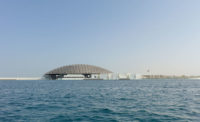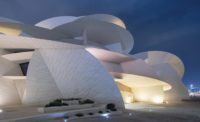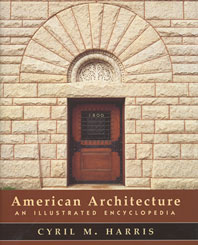When, in 43 BCE, the Romans founded Lyon, in the Auvergne-Rhône-Alpes region of France, it was in large part because of its strategic position at the confluence of two major waterways, the River Saône and the mighty Rhône, the latter of which is navigable all the way to the Mediterranean. But Lugdunum, as the empire called the city, was located some way from the actual confluence, on the right bank of the smaller Saône, and it wasn’t until later that Lyon began to spread down the long spit of land leading to the meeting point. Only in the 19th century was the tip of the spit developed, with industrial, railroad, and port activities—and, inevitably, after the industrial decline of the late 20th century, the city found itself with a large chunk of land ripe for redevelopment. With that history as backdrop, Ateliers Jean Nouvel (AJN) created Ycone, a new 174-foot-high residential tower of 92 apartments that attempts to respond to the changing context of 21st-century Lyon by posing as—and calling itself, in case nobody got it—an icon.
Additional Content:
Jump to credits & specifications
Launched in 1995 and baptized “Lyon-Confluence,” the redevelopment is being carried out in two phases, both of which propose mixed-use programs of housing, shopping, offices, and administrative buildings. The first, completed in 2015 and covering 101 acres, was master-planned by urbanist François Grether and landscape architect Michel Desvigne, and includes contributions by the likes of MVRDV, Massimiliano Fuksas, Jakob + MacFarlane, and Odile Decq. The second phase, launched in 2009 and planned by Herzog & de Meuron (H&dM) with Desvigne, concerns 86 acres and, in contrast to the first, proposes a mix of lower- and higher-rise structures, part of a recent trend in French cities to relax traditional height restrictions and allow taller residential buildings. Ycone is, of course, one of these, and its morphology makes sense in terms of both imposing its presence next to railroad tracks and the developer’s ambition to build some of the city’s most expensive real estate (apartments in the upper floors sold for $1,113 per square foot, which is a record in Lyon).
But Ycone isn’t just about luxury condominiums, for not only does it offer apartments ranging from studios to five-bedroom penthouses (one with a rooftop solarium and pool), it also contains 27 social-sector dwellings for rent (admittedly, at the top end of what is considered “social”), in keeping with French ideas about mixité sociale (discouraging class/income ghettos through urban-planning decisions). There is, nonetheless, a form of physical and qualitative segregation within the tower itself, which AJN describes as “two buildings in one,” since the social sector apartments occupy a separate zone on the northern flank. As well as having its own entrance and elevators, this part of the tower has different floor heights, 10 levels of 8½-foot-high stories having been squeezed in. Adjacent to this zone are nine levels of market-rate apartments for sale, with floor heights of almost 11 feet—the tallest in the building, to bring in more light on the lower levels—and another four levels of market-rate dwellings above, again in the 10-foot-plus range.
In order to make possible this segregation, Ycone was designed as two structurally separate concrete-framed halves. To keep things light and renewable, the facades are in wood, clad with aluminum panels. But it’s inaccurate to talk of just one facade, since, in classic Nouvel boundary-blurring style, Ycone actually has two: balconies wrap around all four of the tower’s elevations and are faced with a white-lacquered aluminum frame, which flares out at the top and is partially glazed with variously colored and textured glass. Nouvel describes the balconies as an “in-between” space—“what the Japanese call ma”—to which the outer skin brings a measure of visual and solar protection while framing views and adding a certain depth to the elevations. Further blurring occurs at roof level, since Ycone is coiffed with an 88-ton steel brise-soleil that also gives the building a distinctive sculptural silhouette.
Another way that Ycone seeks to distinguish itself is through color: in addition to the outer envelope’s lightly tinted glass, the inner elevation’s powder-coated aluminum panels sport 21 pastel hues ranging from sky blue to coral. Where phase 1 of Lyon-Confluence often exhibited formal contortions and garish facade finishes (for example, Jakob + MacFarlane’s orange and green cubes), phase 2, at H&dM’s behest, is intended to be more sober (indeed the phase-2 pilot city block that was directly overseen by the Swiss architects is completely monochrome). Ycone was supposed to be purely white but, perhaps to prevent its being mistaken for a Richard Meier building, Nouvel has added what he describes as homeopathic touches of color—inspired by the Italianizing hues of old Lyon—to make the building’s whiteness vibrate in the manner of Monet’s paintings of Normandy’s chalk cliffs.
In terms of the accommodation it offers, there’s nothing particularly original about Ycone in the French context—even the inclusion of social housing in a private-sector development is standard practice, although it’s perhaps more subtly handled here to the extent that there is no visual distinction made outside. The developer clearly chose Nouvel, as the tower’s name makes evident (say it out loud à la française), to help create a commercially attractive “icon.” While the bet has paid off in the short term (the operation sold out six months before completion), it remains to be seen how the building will age, both in terms of construction quality—will all that exposed metal weather well?—and the unfolding cityscape as Confluence 2 develops around it.
CreditsArchitect: Ateliers Jean Nouvel — Jean Nouvel; Samuel Nageotte, advisor to Jean Nouvel; Thomas Amarsy, Alberto Rubin Pedrazzo, project leaders; Victoire
Engineering: Cogeci (structural); Katene (building services); Arcora (facades)
Size: 70,000 square feet
Cost: withheld
Completion date: July 2019 |
Specifications |















